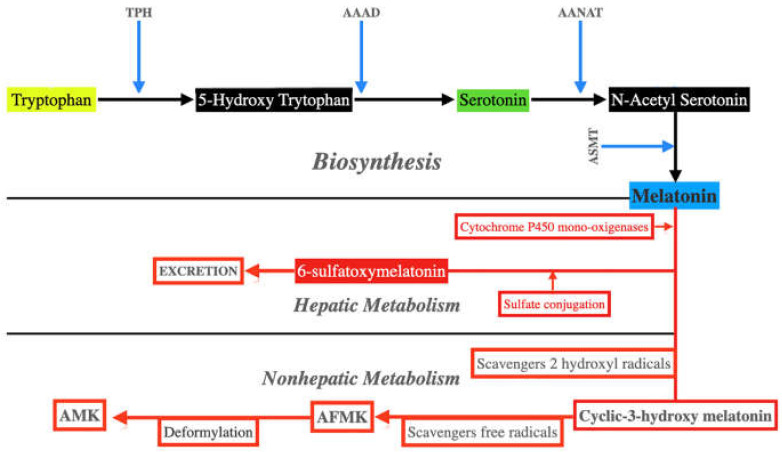Figure 3.
Synthesis and metabolism of melatonin. Melatonin biosynthesis first requires the hydroxylation and decarboxylation of tryptophan. This leads to the formation of serotonin, which, after being acetylated, is methylated and becomes melatonin. Melatonin metabolism takes place in the liver, from where it is excreted, and also in non-hepatic sites; in this case, the transformation of melatonin occurs non-enzymatically after free radical scavenging, giving rise to forms with even more powerful antioxidant activity than melatonin itself, such as cyclic 3-hydroxymelatonin and AFMK. In turn, AFMK can undergo deformylation resulting in the strong antioxidant AMK. TPH: tryptophan hydroxylase. AAAD: aromatic L-amino acid decarboxylase; AANAT: aryl alkylamine N-acetyl transferase. ASMT: acetyl serotonin O-methyltransferase. AFMK: N1-acetyl-N2-formil-5-methoxykinuramine. AMK: N1-acetyl-5-methoxykynuramine.

